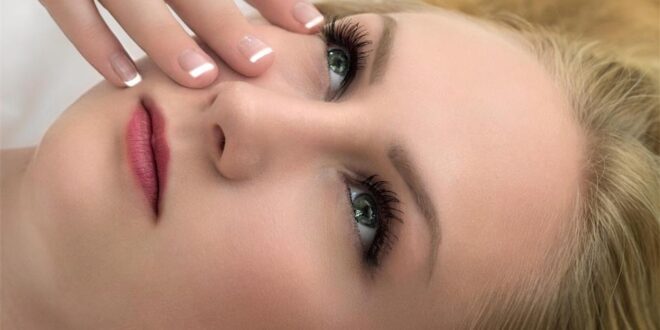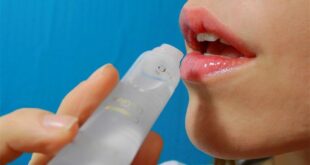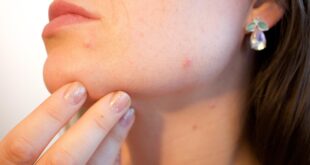Spots show up at the worst times. A photo day. A match. A birthday. It feels unfair, and it can mess with confidence fast. The good news is that skin follows simple rules. When those rules are clear, breakouts get way easier to handle.
This guide keeps things plain and calm. No hard words. No long routines. Just what works and why, so the face in the mirror feels more friendly again.
What acne actually is
Skin has tiny holes called pores. Each pore has a small hair and an oil gland. Oil keeps skin soft, which is normal. Trouble starts when extra oil mixes with dead skin and blocks the pore. Bacteria move in, the area swells, and a spot appears. Whiteheads and blackheads are blocked pores. Red pimples and cysts are deeper and sore.
Acne is common during the teen years because hormones tell oil glands to work harder. That does not mean skin is dirty. It means the system is active. Cleaning helps, but scrubbing hard only upsets skin and makes more redness.
A simple morning plan
Mornings set the tone for the day. Keep it quick.
Wash with a gentle cleanser. No harsh soap. Rinse with lukewarm water, not hot. Pat dry with a soft towel. Put on a light, non-greasy moisturizer. Skin that stays calm makes less oil later.
Finish with sunscreen, SPF 30 or higher. Sun can darken marks left by old spots and can dry skin in a way that triggers more oil later. Look for “non-comedogenic” on the label, which means it will not block pores.
A calm night routine
Evenings are for cleaning the day off. Wash again with the same gentle cleanser. This time, add one helpful step if the skin can handle it. Two common options work well for many teens:
Salicylic acid (about 0.5%–2%) helps clear out pores. It works inside the pore and loosens dead skin. Use a thin layer on the areas that break out, not just on single spots.
Benzoyl peroxide (about 2.5%–5%) fights the bacteria that make spots swell. It can bleach fabric, so use a white pillowcase.
Pick one of these to start. Use it every other night for a week, then up to nightly if skin stays calm. Follow with a simple moisturizer. If dryness shows up, pause for a night, then start again. Steady beats strong.
When home care needs backup
Some breakouts do not settle with basic steps. Deeper, sore spots or acne that leaves marks may need clinic help. Light and laser treatments, short courses of prescription creams, or other doctor-guided options can make a real difference. One option to read about is aviclear for acne, which targets oil glands to cut down the extra oil that feeds breakouts. It is not a quick fix for everyone, but it is worth knowing what is out there in case home care is not enough.
Habits that help more than any product
Small daily moves add up. These are simple and free.
Keep hands off the face. Picking pushes oil and bacteria deeper, which invites bigger, slower spots. If a whitehead is ready, a clean hydrocolloid patch overnight can flatter it without squeezing.
Change pillowcases often. Hair products, sweat, and oil build up fast. A clean case every few days helps a lot.
Wipe phones. Screens touch cheeks. A quick wipe before long calls keeps that area calmer.
Watch hats and helmets. Sweat and pressure on the same spot day after day cause “friction acne.” Wash bands and pads, and give skin a break when possible.
Tie back hair before sleep. Heavy leave-in products can slide onto the forehead and along the jaw. If hair care is rich or oily, wash the hairline well.
Rinse after sweat. After practice or PE, rinse the face with water or use a gentle micellar wipe. Do a full wash at home.
Food and mood: simple checks
Food is not the only cause of acne, but some choices can make a difference. Some teens notice more breakouts with lots of milk or very sweet snacks. Try a two-week check: cut back on milk, ice cream, and sugary drinks. Swap in water, fruit, and yogurt with less sugar. See if skin looks calmer.
Keep stress in mind too. Stress hormones can nudge oil glands. Short walks, music, or a steady bedtime all help.
Sleep matters. Aim for a regular bedtime and a cool room. Late nights and bright screens keep the mind wired and the skin tired. Tired skin heals slowly.
Ingredients that actually pull weight
It helps to know what labels mean, so money is not wasted on fancy words.
Salicylic acid clears pores. It works well in cleansers and toners. Think of it as a gentle “unclogger.”
Benzoyl peroxide fights the bacteria behind red, sore spots. Use a small amount, and let it dry before bed.
Adapalene is a retinoid sold over the counter in some places. It helps pores stay open and can fade dark marks over time. Start slow, two nights a week, because it can be drying.
Niacinamide is soothing. It can reduce redness and help the skin barrier. It pairs well with the other three.
Tea tree oil and toothpaste are not smart choices. They are harsh and can burn. Lemon juice is worse. Keep kitchen items in the kitchen.
Building a starter kit
No one needs a shelf full of bottles. A small kit covers the bases.
One gentle cleanser. One acne treatment (salicylic acid or benzoyl peroxide to start). One simple moisturizer. One sunscreen. That is it. If a retinoid gets added later, use it at night and pause other strong steps on those nights.
Keep products the same for at least eight weeks before judging them. Skin needs time to settle. If the skin is very angry, do not layer new products fast. Add one thing, wait a week, then add the next.
Dealing with a sudden, painful pimple
The big, deep ones can hurt. Try a cold compress for a few minutes to bring down swelling. Use a thin layer of benzoyl peroxide on the spot at night. In the morning, a hydrocolloid patch can help keep hands off and flatten the area under makeup or sunscreen. Do not dig at it. Squeezing a deep pimple usually turns one bump into three.
When to see a doctor
Clinic help is smart when any of these are true:
Breakouts are deep and sore.
Spots are leaving dark marks or scars.
Over-the-counter care has been steady for 8–12 weeks with little change.
A doctor can tailor a plan. That may include a stronger retinoid, a short course of antibiotics with a clear stop date, or, for some, medication that balances hormones. Skin treatments at a clinic can also shrink oil output or calm swelling faster than home care alone. Every face is different, so a plan that matches the skin in front of the mirror works best.
How to track progress without overthinking
Checking the mirror every hour makes any small change feel huge. A calmer way is to take one photo per week in the same light, hair pulled back, clean face. Keep notes on three things: new spots this week, pain level, and how oily the T-zone looked by noon.
After a month, the trend is easier to see. If new spots are fewer or less sore, the plan is working even if old marks are still fading.
Common myths that slow people down
“Scrubbing harder makes skin clean.” Hard scrubbing tears the skin barrier. That leads to more redness and flakes that block pores again. Gentle pressure wins.
“Tanning clears acne.” Sun may make redness look smaller for a short time, but it damages skin and darkens old marks. Sunscreen is the better path.
“Chocolate always causes spots.” Not for everyone. If sweets seem to be a trigger, cut back for a couple of weeks and check photos. Keep what helps, drop what does not.
“Makeup is bad for acne.” Makeup that says “non-comedogenic” is okay. Clean brushes weekly and remove makeup before bed.
“More products mean faster results.” Skin prefers a few steady steps. Big routines confuse it.
A short map you can follow
Here is a simple way to put all this together.
Morning: gentle wash, light moisturizer, sunscreen.
After PE or sports: quick rinse or wipe, then water.
Night: gentle wash, thin layer of one acne treatment, moisturizer.
Weekly: fresh pillowcase, clean phone screen, wash hats and bands, take one photo.
If things are not better after two months, bring notes and photos to a doctor. Extra help is normal, not a failure.
Final notes and next steps
Clear skin comes from steady, kind care, not force. A simple routine that fits busy days will beat any harsh, rushed plan. Keep hands off the face, keep pores clear, and protect skin from the sun. Make small changes, track them, and give them time to work.
Share what helps with friends and family, and ask for support when it feels tough. Breakouts are common, but they do not get to decide confidence or joy.
 khamush.com Lifestyle | Motivation | Poems
khamush.com Lifestyle | Motivation | Poems



